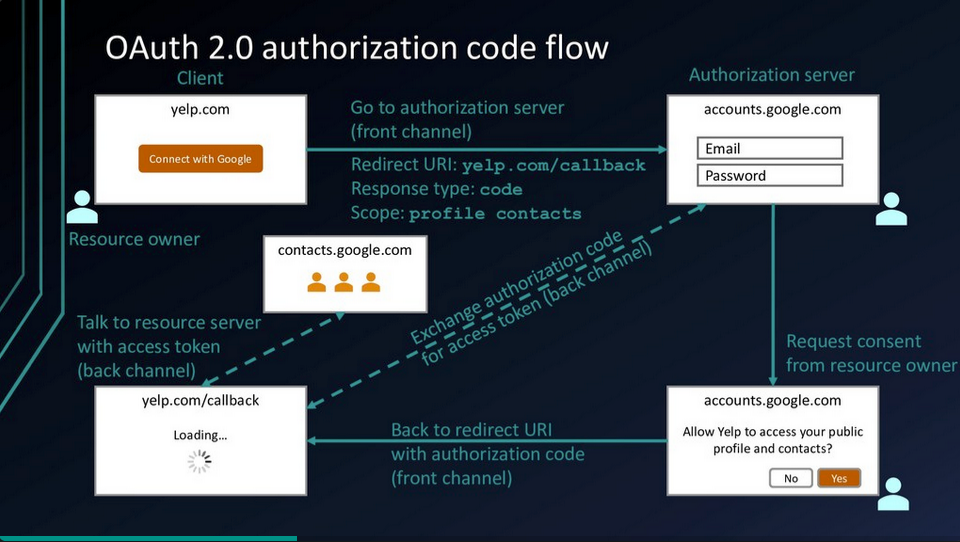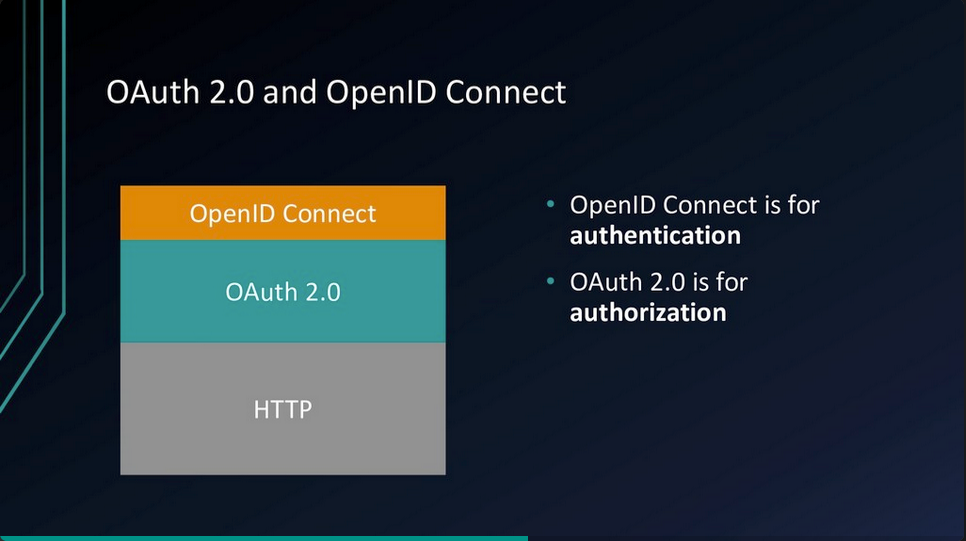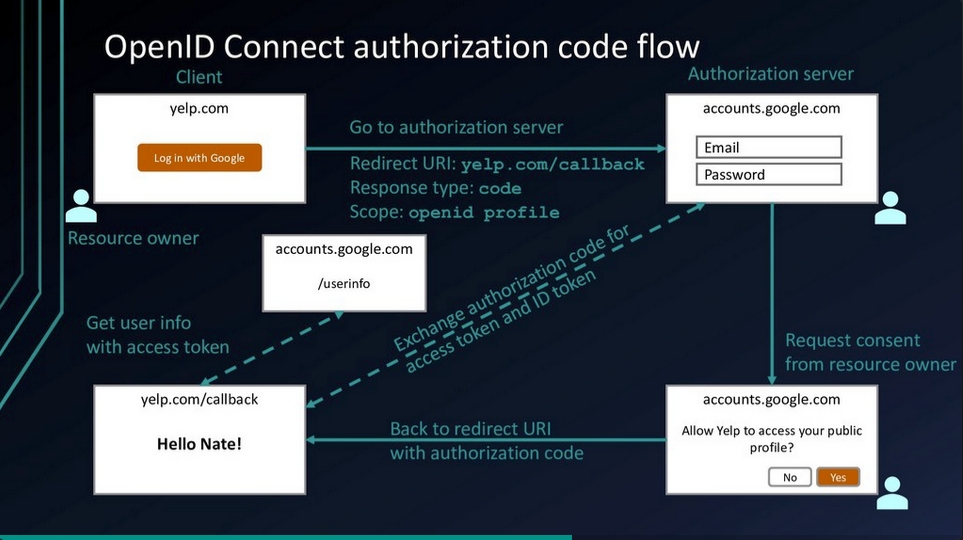OAuth 2.0 and OpenID Connect
Here are some notes I made while watching Nate Barbettini’s presentation on OAuth 2.0 and OpenID Connect. You can find the video of the talk here.
Delegated Authorisation
OAuth was designed to solve the problem of delegated authorisation (i.e. “How can I share my data with a website without giving it my password?”).
Delegated authorisation allows a website / service to access data from another site (one that you’re already using) within the bounds of a specified set of permissions (e.g. “allow access to public profile and contacts”).
OAuth Authorisation Flow

Permissions are set using Scopes. The Authorisation Server has a list of scopes that it understands and can be requested by the Client.
The Back Channel is used to keep sensitive data out of the browser (Front Channel). A Back Channel needs to be created in advance to link the Client to the Authorisation Server.
Authentication
Pre-2014, OAuth was being used for authentication and authorisation.
OAuth wasn’t designed to be used for authentication and so doesn’t have a standard way to get the user’s information. This resulted in every implementation being a little different.
OpenID Connect
OpenID Connect (OIDC) was created as an extension to OAuth 2.0 to provide authentication.

OIDC provides:
- ID token
- UserInfo endpoint for getting more user information
- Standard set of Scopes
- Standardised implementation
Authorisation Server returns Access Token and ID Token (JWT).
Tokens are validated through Introspection.
